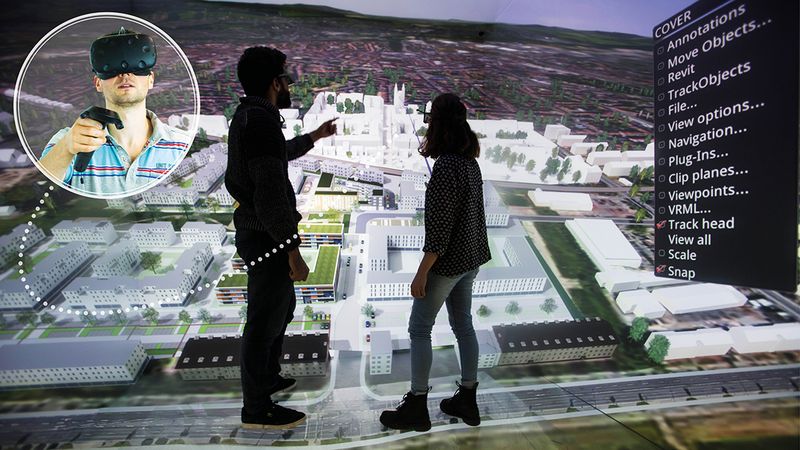
Using new VR-software developed by KoLab, combined with inexpensive, commercially available VR-headsets and controllers, teams of scientists, researchers, developers, and users can gather in a virtual meeting room, with hardware located wherever is most convenient. Meeting participants are represented by avatars that can communicate in virtual reality, where they can collaboratively observe, analyze, and interact with 3D visualizations — all from their workplaces or even home offices.
Especially in situations where spontaneous in-person meetings are difficult — for example, when colleagues work at different locations, or when new kinds of challenging conditions arise, such as the "social distancing" that has become necessary due to the current coronavirus pandemic — this technology will empower collaboration and dramatically simplify complicated work processes. Even in times without the coronavirus pandemic, it will accelerate scientific discovery and significantly shorten the time it takes to bring new products to market. It is also expected that the new software will prove to be extremely useful for education and training. It will not only support and simplify education of students at universities but could also be integrated into modern distance learning frameworks.
The KoLab-BW project is a collaboration among researchers at the High-Performance Computing Center Stuttgart (HLRS), the Visualization Research Center of the University of Stuttgart (VISUS), Ulm University, the Competence Center for Virtual Reality at the Mannheim University of Applied Sciences, Albstadt-Sigmaringen University, and the University of Applied Sciences Ravensburg-Weingarten. Funding for the project was provided by the Baden-Württemberg Ministry for Science, Research and Art.
Scientists and engineers interested in learning more about the new KoLab-BW software are invited to contact Visualization Department Leader and project coordinator Dr.-Ing. Uwe Wössner.